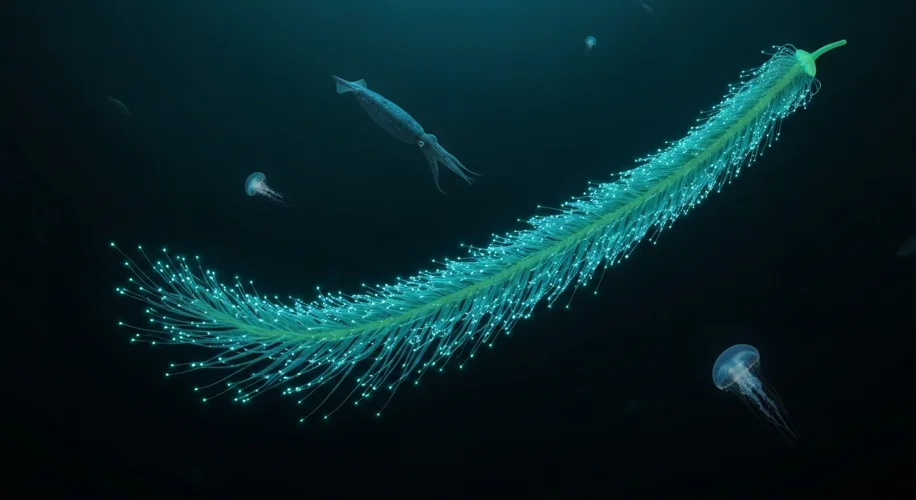Imagine a creature so long it stretches across a football field, a living chain of specialized units, each performing a unique task. No, it’s not science fiction; it’s the incredible world of siphonophores!
Today, September 4th, 2025, I want to dive into these fascinating, often misunderstood, deep-sea dwellers. As someone with a background in science, I’m always amazed by the sheer diversity of life on our planet, and siphonophores are a perfect example of nature’s ingenuity.
What Exactly Are Siphonophores?
Siphonophores belong to the phylum Cnidaria, which also includes jellyfish and corals. However, they’re not single animals in the way we typically think of them. Instead, they are colonies of highly specialized, genetically identical individuals called zooids. These zooids are so specialized that they can’t survive on their own. They are physically connected and function as a single, coordinated organism.
Think of it like a highly organized city where each building has a specific job: some zooids are responsible for propulsion, others for feeding, reproduction, or defense. This colonial structure allows them to achieve incredible feats, like forming incredibly long chains.
The Contenders for ‘Longest Animal’
For a long time, the title of the longest animal on Earth was held by the bootlace worm (Lineus longissimus), which can reach lengths of up to 55 meters (about 180 feet).
However, in 2020, a remarkable discovery shifted our understanding. A siphonophore, Praya dubia, was observed and measured in the deep waters off the coast of Australia. This gelatinous marvel was estimated to be a staggering 120 meters (around 394 feet) long! That’s longer than the iconic blue whale, longer than a football field, and even longer than the famed bootlace worm.
Another contender is the Apolemia siphonophore, observed in 2024, which scientists believe could be even longer, with estimates suggesting lengths of up to 150 meters (nearly 500 feet). These discoveries highlight how much we still have to learn about the deep ocean and the incredible life it harbors.
A Symphony of Specialization
How do they manage to be so long and coordinated? Each siphonophore colony is a marvel of biological engineering:
- Pneumatophore: The float at the top, filled with gas, which helps the colony stay buoyant.
- Nectophores: These are the swimming bells, pulsing rhythmically to propel the colony through the water.
- Gastrozooids: These are the feeding polyps, equipped with tentacles to capture prey.
- Gonozooids: These are the reproductive units.
- Dactylozooids: These are specialized for defense, often armed with stinging cells (nematocysts).
When you see a siphonophore, you’re not looking at one creature, but a whole community working in perfect, albeit alien, harmony. They drift through the ocean, passive hunters, their long, stinging tentacles creating a vast net to ensnare unsuspecting prey.
Redefining ‘Organism’
The fact that siphonophores are colonies, not single individuals, sparks fascinating scientific debate about what truly constitutes an ‘organism.’ They blur the lines between individual life and collective existence, forcing us to reconsider our definitions.
These deep-sea giants are a testament to the incredible power of evolution and the vastness of the unknown right here on our own planet. They remind us that the ocean depths hold wonders beyond our wildest imagination, waiting to be discovered.

